Haochen He
Year of birth: 2001
Where do you live: Kansas City, MO, United States (originally from Chongqing, China)
Your education: Bachelor of Architecture (graduated 2024), Cornell University
Describe your art in three words: Metaphorical · Ontological · Experiential
Your discipline: Architecture · Visual Art · Photography
Instagram
Your background in architecture clearly informs your artistic practice. How do you see the relationship between architecture and visual art evolving in your work?
Architecture has been the foundation of my creative path and continues to shape my perspective on art. My training taught me to observe how space is structured, which made me attentive to the systems that underpin design, from structure and circulation to regulation and social protocols. Initially, I worked within these frameworks as part of an architectural practice; however, over time, I grew curious about how to challenge and rethink these systems. In my artistic endeavors, this curiosity evolved from architectural philosophy to a broader examination of how frameworks impact human perception and how questioning them might lead to fresh perspectives.
As a result, the link between architecture and visual art in my work is dynamic. While architecture offers clarity and precision at the beginning, art, in turn, fosters the ability to ponder, question, and challenge preconceptions. Together, they start to create a dialogue that deepens with every project; one provides me with structure and discipline, while the other lets me examine and challenge them. As a foundation, architecture led me to art, and art now feeds back into architecture by prompting me to think critically about the systems it relies on.
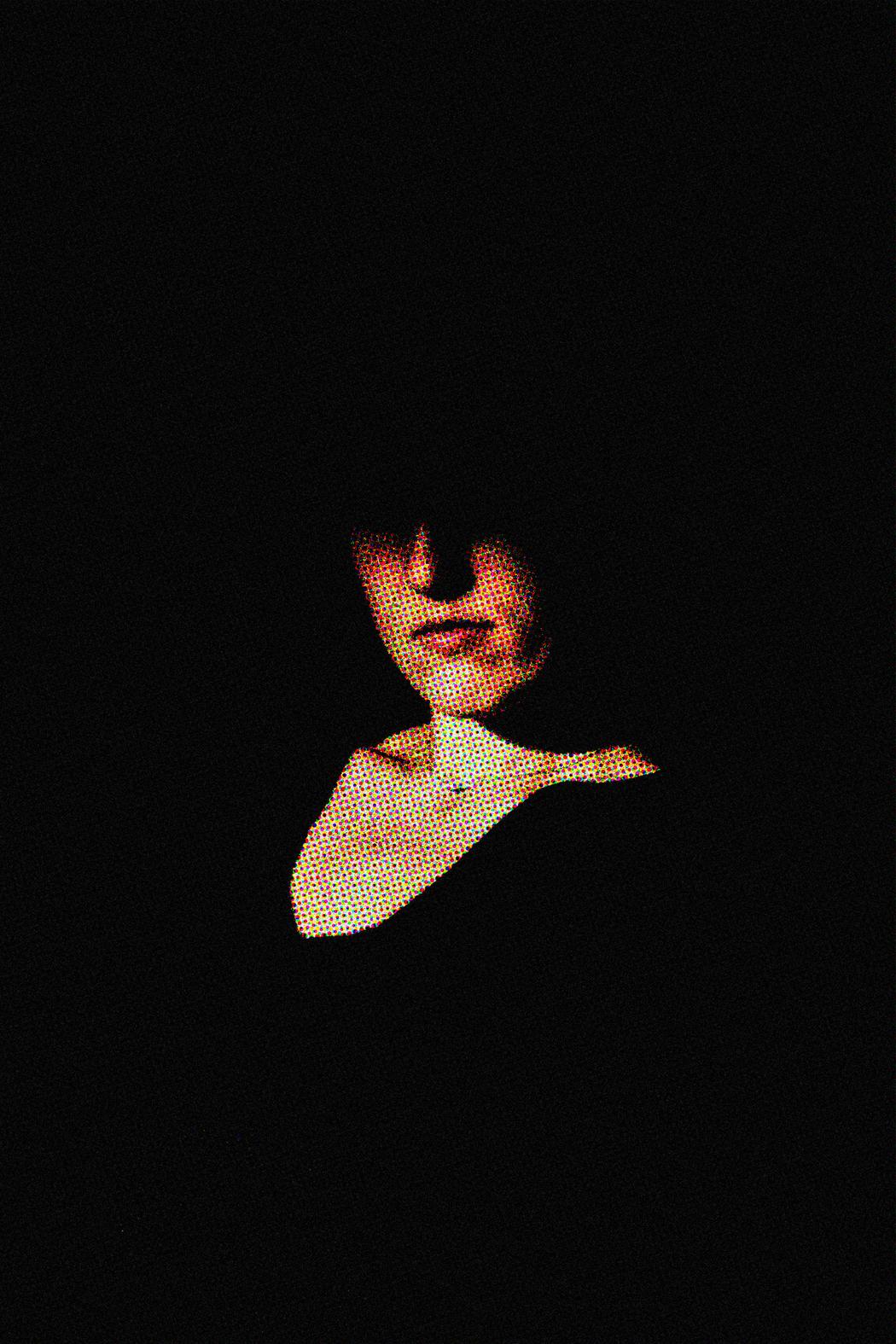 Haochen He | Identity Matrix Escape | 2025
Haochen He | Identity Matrix Escape | 2025
In your statement, you describe fragmentation, concealment, and distortion as reflections of human psychology. Could you share how these themes first emerged in your creative process?
These themes first emerged while I was working on a portrait project that later shaped my ongoing practice. I have always enjoyed conversations with my models and collaborators, and my works often take form through these exchanges.
During one session, a model told me she wanted to remain partly hidden because she was tired of being seen only through expectations of perfection, always smiling, always composed. We experimented with ways of retreat. What began as a technical adjustment became an emotional discovery. In partial concealment, she seemed more present, as if the act of hiding allowed her to exist more freely.
That moment stayed with me. It reminded me of how, in architecture, we study the relationship between solid and void, between positive and negative space. The same principle seemed to exist in the emotional dimension of portraiture. Fragmentation, concealment, and distortion became ways to express that delicate balance between presence and absence, exposure and protection. Since then, my creative process has focused on that in-between space, where dialogue becomes a structure and vulnerability becomes a form of expression.
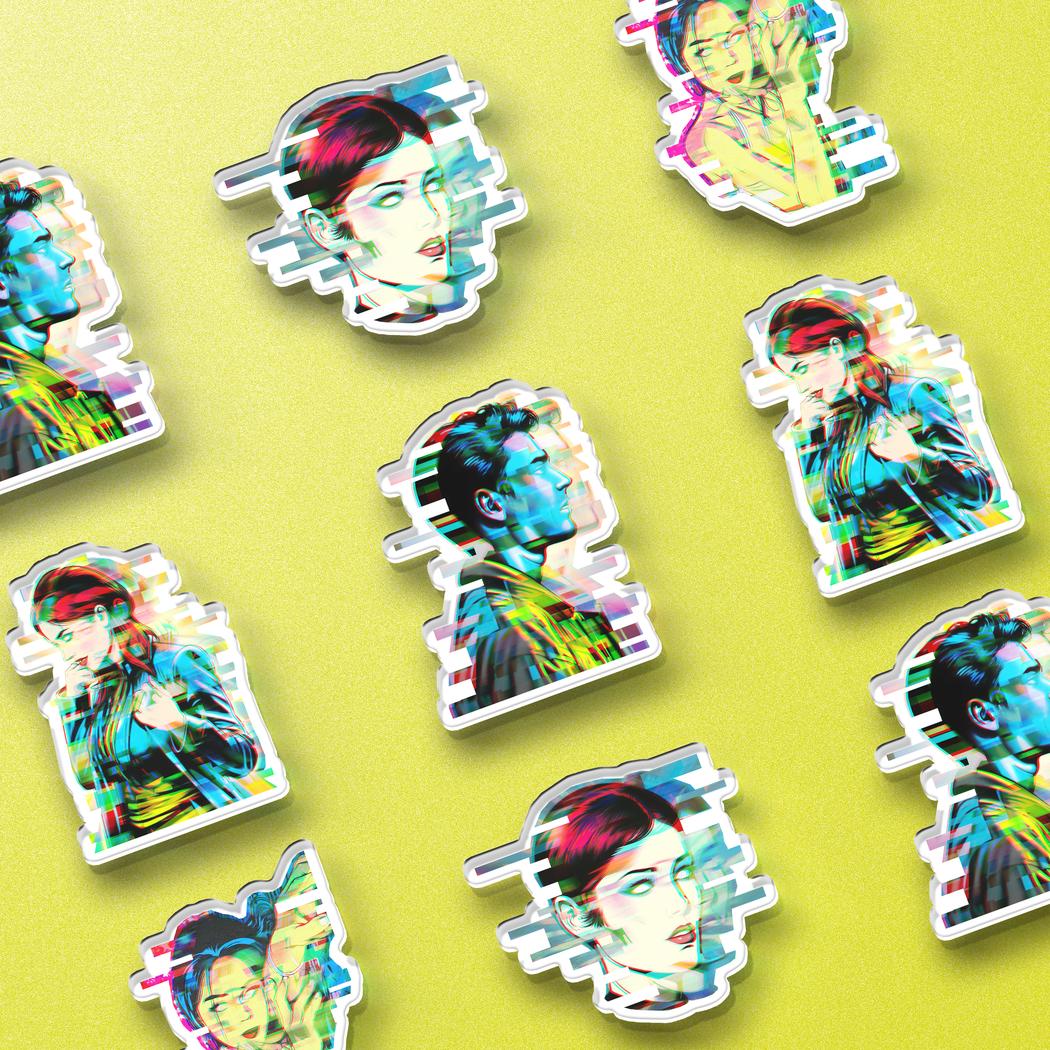 Haochen He | Continuum Of Comics Identity Relics | 2025
Haochen He | Continuum Of Comics Identity Relics | 2025
Many of your works incorporate glitch aesthetics and digital disruptions. Do you view these as metaphors for contemporary identity, or as purely formal experiments?
I first became interested in the glitch after observing how digital images are constantly remade by the systems that store and share them. Compression, transfer, and repetition slowly erode clarity, leaving traces of distortion that feel strangely human. These visual imperfections echo the instability of how people construct and present themselves in modern life. What appeared as a technical flaw began to reveal something about perception and vulnerability.
In my work, glitch aesthetics evolved into a reflection on identity. The fragmented and misaligned image speaks to how individuals navigate the tension between visibility and disappearance in a world defined by constant mediation. It reminds me that even when representation fails, presence endures in another form. For me, the glitch is not decoration, but a psychological condition made visible, a space where selfhood resists complete resolution.
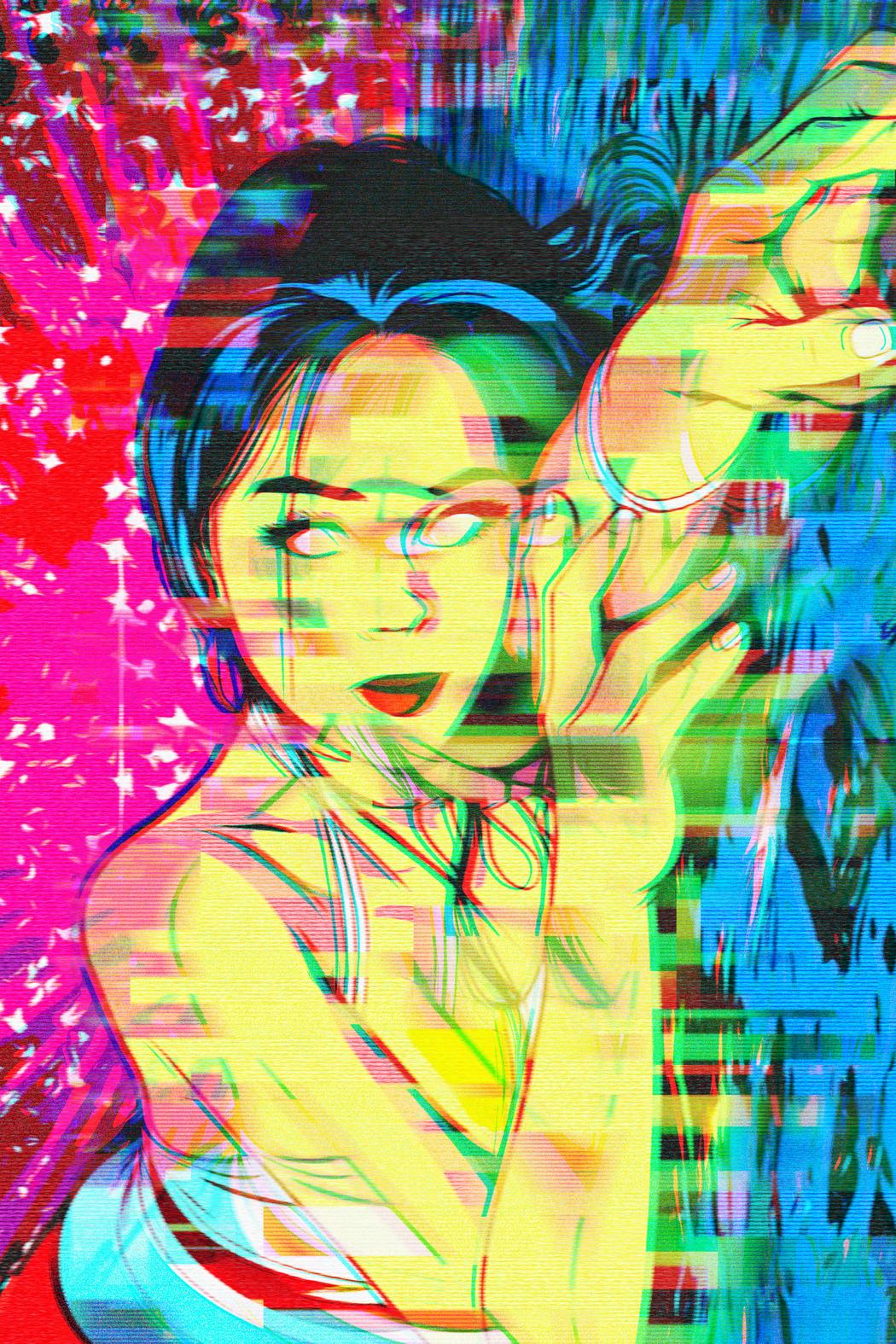 Haochen He | Continuum Of Comics Identity Relics | 2025
Haochen He | Continuum Of Comics Identity Relics | 2025
How do you balance your parallel practices of architecture, fine art, photography, and writing? Do you find that one discipline often leads or dominates the others?
Architecture was where I began, and for a long time, it shaped my approach to everything else. My first instinct was always to think in spatial terms, to look for order and logic before emotion. Even in other mediums, I carried that framework with me. Over time, I realized that there might be some limitations, so I began to let photography, art, and writing interrupt that system.
In practice, the balance happens through rhythm rather than separation. I do not work on four different projects at once. Instead, I let one practice lead and allow the others to echo in the background. A concept that begins in architecture might later return as a photographic composition or an essay that reflects on the same idea. When I move between disciplines, I notice how each shift changes the pace of thought. Architecture provides structure, art brings freedom, photography sharpens my perception, and writing helps me to summarize. What used to feel like competing identities has become a single process that unfolds in cycles of creation, reflection, and rebuilding.
Your projects often blur the line between clarity and rupture. What role does ambiguity play in how you want viewers to experience your work?
Ambiguity is the point at which perception becomes active. I want the viewer to pause, to question what they see, and to notice the moment when the image shifts from representation to suggestion. For me, clarity delivers information, but ambiguity invites reflection. It asks the viewer to complete the work through their own associations and emotions.
In many of my projects, this ambiguity is not a lack of resolution but a deliberate threshold. I am interested in how people transition between understanding and uncertainty, and how this movement can reflect their own internal states. When an image is neither fully open nor entirely closed, it becomes more personal. It allows the viewer to find meaning that cannot be fixed or named, which is the most honest kind of encounter I can hope for.
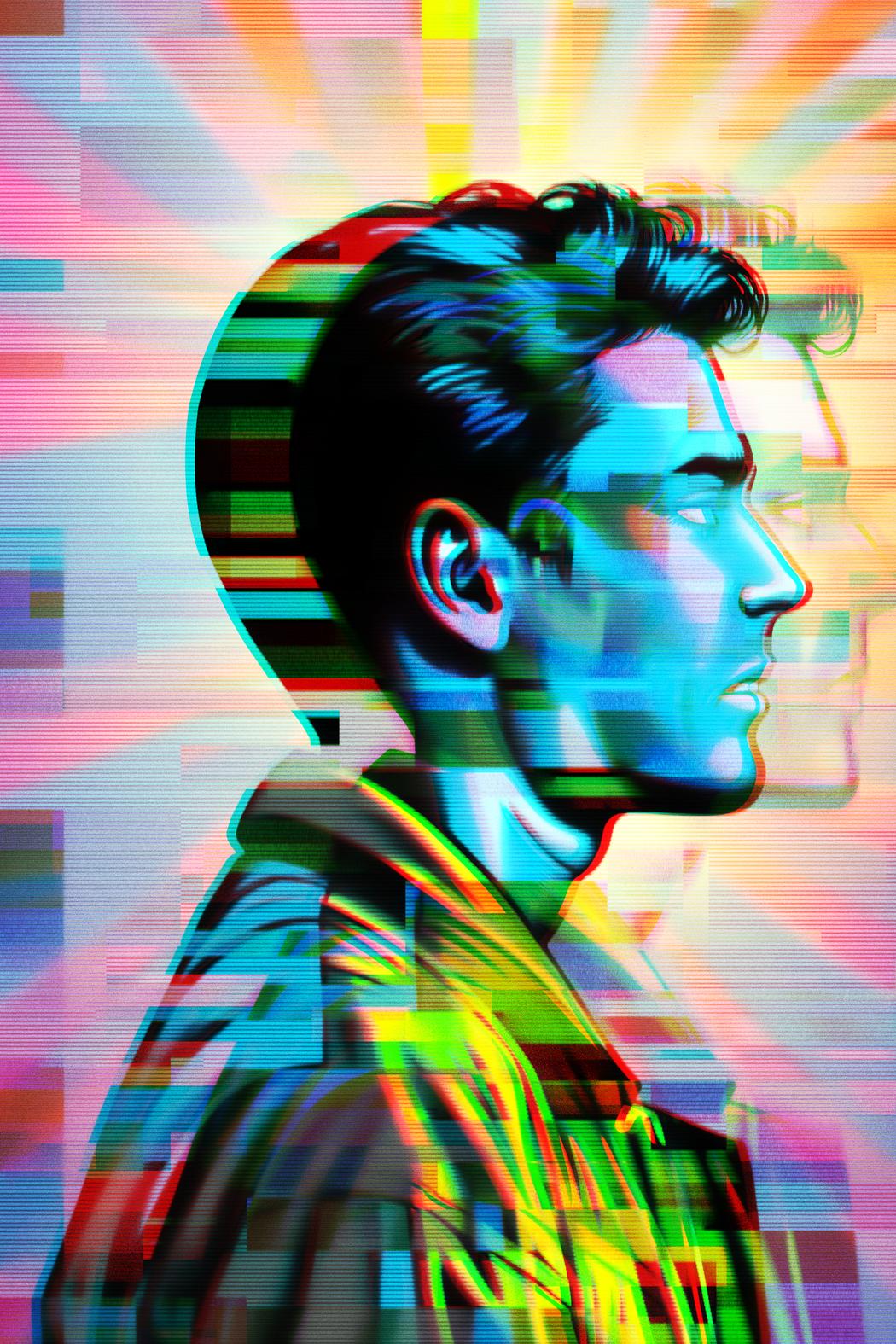 Haochen He | Continuum Of Comics Identity Relics | 2025
Haochen He | Continuum Of Comics Identity Relics | 2025
The installations and digital artworks you create often feel immersive. How important is the concept of “space” in your non-architectural works?
Space is often where an idea begins, though the work eventually grows beyond it. My background leads me to think spatially, so many projects start with questions about distance, boundaries, or the relationship between the body and its environment. As the work develops, those spatial ideas often evolve into something more symbolic.
I see space less as a subject and more as a way of thinking. It provides a framework for the work to begin with, but it never confines it. As each project unfolds, I allow it to extend beyond formal composition into emotion, memory, and perception.
What remains constant is the awareness of how people occupy both visible and invisible spaces, within the world and within themselves. In my projects, space is never a backdrop but an active agent that reveals how people live, move, and sense their surroundings.
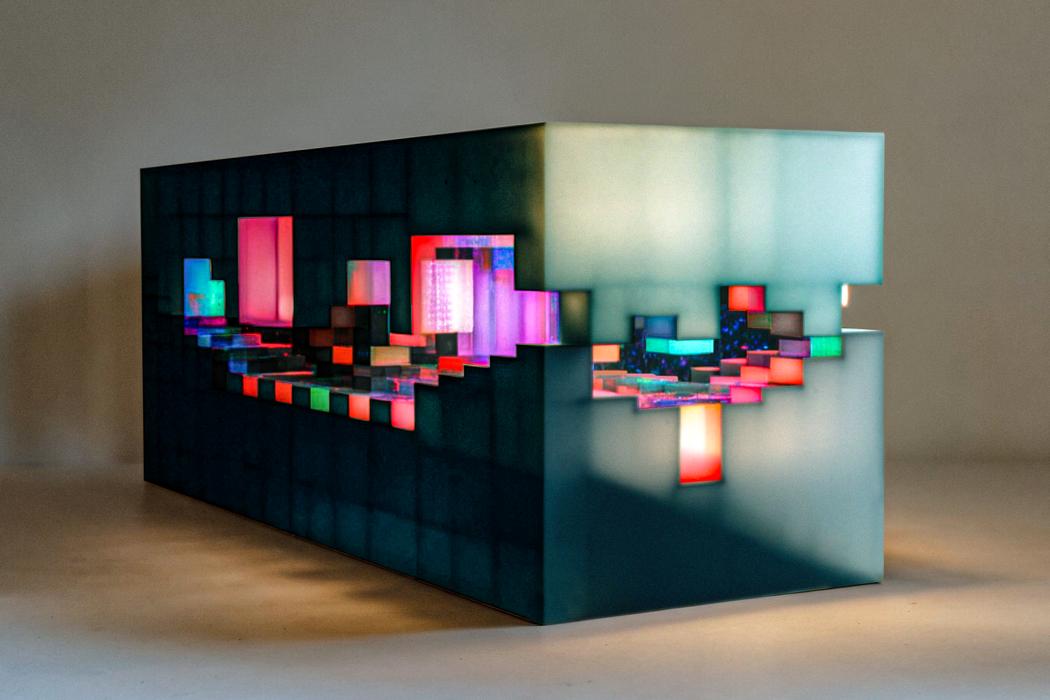 Haochen He | 404 Stair Not Found Fragmented Logic | 2025
Haochen He | 404 Stair Not Found Fragmented Logic | 2025
Having exhibited in both Europe and America, how do you feel audiences respond differently to your work in various cultural contexts?
In past exhibitions, I collaborated with the curators to place a sketchbook where visitors could write or draw freely. The notes they left often revealed cultural differences in how people relate to images. In Europe, many responses focused on concept and process, asking how an idea developed or what kind of theory inspired it. In America, people often shared emotions or stories that the work reminded them of, using the page almost like a form of dialogue.
Across these contexts, what I find most meaningful is how viewers connect through uncertainty. Whether they respond through reflection or emotion, they often describe a sense of recognition in what feels incomplete or unresolved. That shared sensitivity to ambiguity reminds me that the work’s meaning continues to grow beyond my own intention.

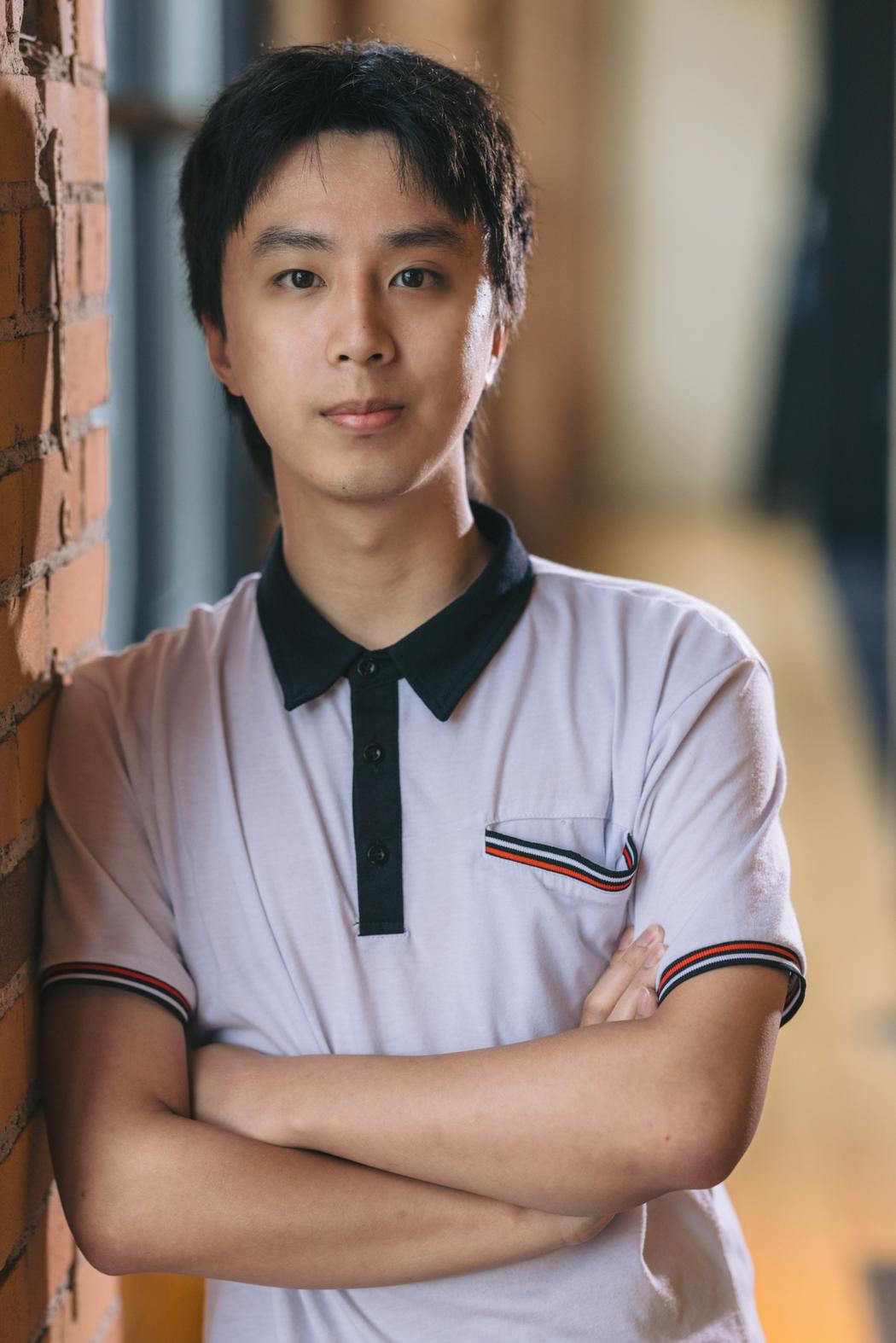
Leave a Reply